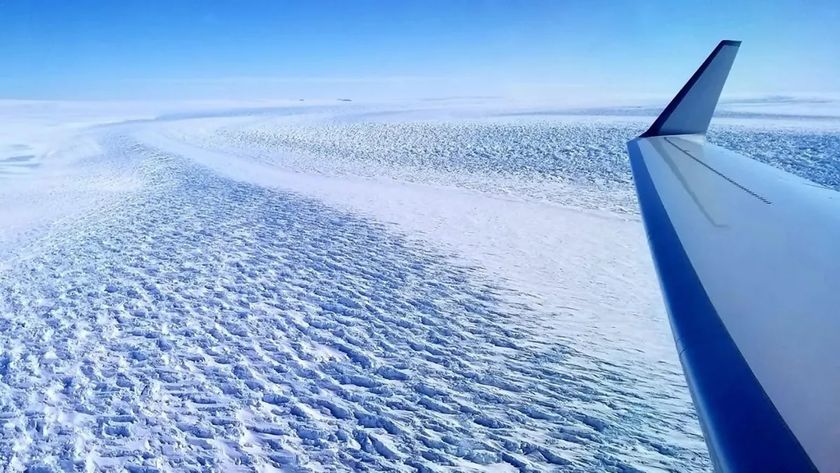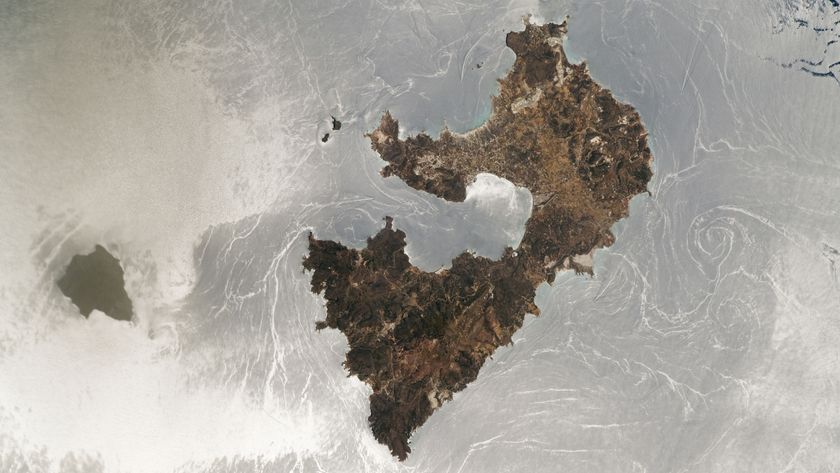
It turns out the ocean is one noisy, riotous place, teeming with the sound of seismic temblors, whale songs and ship propellers — even at the deepest ocean trench.
Researchers at the National Oceanic and Atmospheric Administration (NOAA) sent an underwater microphone nearly 36,000 feet (10,972 meters) below the water's surface into the Challenger Deep trough in the Mariana Trench, the deepest spot in the ocean. [Listen to Sounds from the Deepest Spot in the Ocean]
"You would think that the deepest part of the ocean would be one of the quietest places on Earth," Robert Dziak, a research oceanographer and chief project scientist with NOAA, said in a statement. "Yet there is almost constant noise. The ambient sound field is dominated by the sound of earthquakes, both near and far, as well as distinct moans of baleen whales and the clamor of a category 4 typhoon that just happened to pass overhead."
Commercial freight ships, submarines and underwater construction projects have all added to the noisy din found under the waves. In fact, the ocean may be about 10 times noisier today than it was 50 years ago, said Ocean Conservation Research, an organization that studies human-caused noise in the world's oceans.
Researchers at NOAA said they wanted to understand whether all that human din was actually causing noise levels in the deep ocean to increase, and if so, how that noise affected the migration, communication and feeding patterns of sonar-reliant creatures such as dolphins and whales. To do so, the scientists said they wanted to establish a baseline noise level for the deep ocean, which could help reveal if noise levels are likely to rise in the coming decades.
But getting the underwater microphone, or hydrophone, nearly 7 miles (11 kilometers) underwater was no trivial matter. The pressure at the bottom of the Mariana Trench is more than 1,000 times the atmospheric pressure at sea level. [In Photos: James Cameron's Epic Dive to Challenger Deep]
"The pressure at that depth is incredible," Haru Matsumoto, an Oregon State University ocean engineer who worked on the project, said in the statement. "We had to drop the hydrophone mooring down through the water column at no more than 5 m [16 feet] per second to be sure the hydrophone, which is made of ceramic, would survive the rapid pressure change."
Sign up for the Live Science daily newsletter now
Get the world’s most fascinating discoveries delivered straight to your inbox.
In July 2015, the team released the hydrophone from a U.S. Coast Guard ship docked off the coast of Guam and anchored the device to the bottom of the Challenger Deep trough. They then recorded 23 days of ocean noise, until the flash drive on the device was full.
When the team hauled up the hydrophone, they discovered there was a constant thrum of noise lurking beneath the waves. Whale songs, ship propellers, seismic waves from a 5.0-magnitude earthquake in the ocean crust off Guam and even overhead typhoons sent sound waves reverberating into the deepest part of the ocean.
The team said it plans to return in 2017 to see how the noise of the deep ocean has changed.
Follow Tia Ghose on Twitter and Google+. Follow Live Science @livescience, Facebook & Google+. Original article on Live Science.

Tia is the managing editor and was previously a senior writer for Live Science. Her work has appeared in Scientific American, Wired.com and other outlets. She holds a master's degree in bioengineering from the University of Washington, a graduate certificate in science writing from UC Santa Cruz and a bachelor's degree in mechanical engineering from the University of Texas at Austin. Tia was part of a team at the Milwaukee Journal Sentinel that published the Empty Cradles series on preterm births, which won multiple awards, including the 2012 Casey Medal for Meritorious Journalism.











